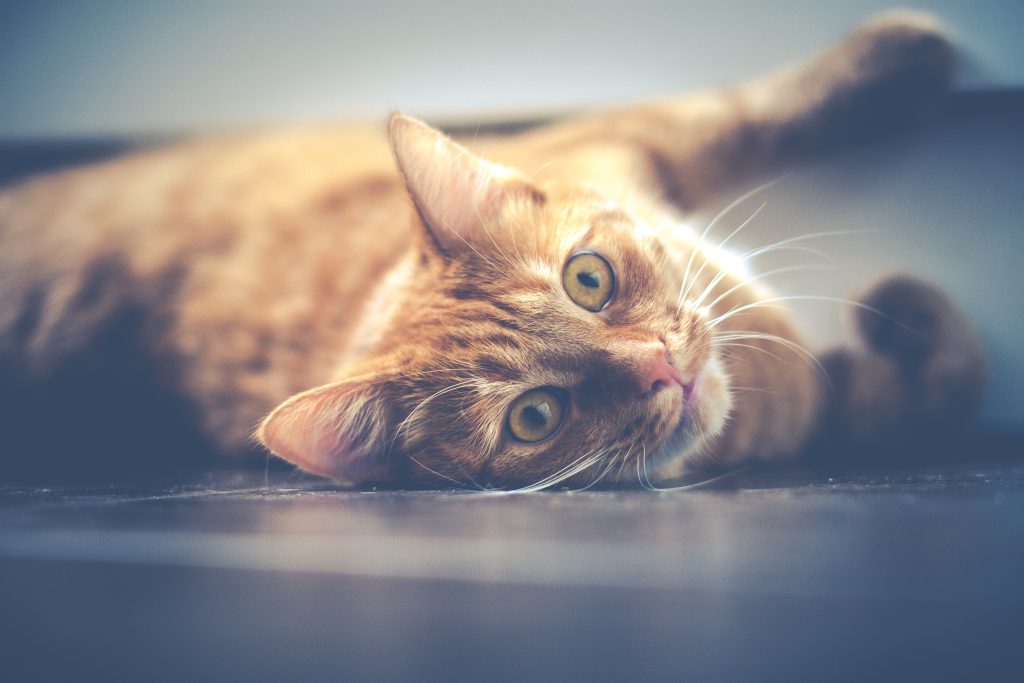Hypertension in cats
What is high blood pressure (hypertension) in cats?
In recent years, our cats have been living longer lives. That’s of course wonderful, but it also means that age-related conditions are becoming more common. One of the most frequent of these is high blood pressure, also known as hypertension. Some veterinarians even call hypertension the silent killer in cats, because it can be very difficult to detect — not only for cat owners, but also for veterinarians. By the time symptoms appear, it is often already (too) late.
What causes high blood pressure in cats?
The most common causes of high blood pressure in cats are often other health problems, such as chronic kidney disease, an overactive thyroid, heart issues, or adrenal gland disorders. Age and overweight can also contribute to elevated blood pressure. In some cases, no clear cause is found; this is called idiopathic hypertension.
Hypertension mainly affects older cats. But when is a cat actually considered “old”? Cats are seen as (beginning) seniors from the age of 7. Cats between 11 and 14 years are considered elderly, and from 15 years onward, very elderly.
Research shows that 1 in 8 older cats suffers from high blood pressure. That’s why it can be wise to start screening cats from the age of 7, and it is especially important for senior and elderly cats.
What are the signs of high blood pressure in cats?
At first, most cats show little to no signs of high blood pressure. In humans, hypertension is known to cause vague symptoms like headaches. With cats, we can’t measure this directly, but specialists suspect that cats may suffer more from high blood pressure than we can see or notice.
High blood pressure in cats is often the result of another underlying condition. A cat with high blood pressure may therefore be sicker than we initially thought. Some cats may appear lethargic or withdrawn, while others may hide more often. This behavior could be due to headaches caused by the high blood pressure. Some cats may also become restless and have an increased heart rate.
Your cat may also show symptoms of the condition causing the high blood pressure, such as:
- Thyroid problems
- Kidney failure
- Adrenal gland tumors
What are the possible consequences of high blood pressure in cats?
High blood pressure in cats can have several serious consequences, including:
- Blindness: High blood pressure can cause the retina in the eye to detach, leading to blindness.
- Bleeding: Bleeding may occur behind the cornea.
- Stroke: Excessive pressure can cause bleeding in the brain.
- Heart failure: The heart has to work harder, which can thicken the heart muscle and lead to heart problems.
- Kidney failure: High blood pressure can damage the kidneys.
How do we diagnose hypertension in cats?
Measuring a cat’s blood pressure is not unpleasant for them. However, some cats experience what is called “white coat hypertension”. This means their blood pressure appears falsely high, for example, when they see the veterinarian.
To get the most accurate reading, it’s important that the cat experiences as little stress as possible. Studies have shown that cats benefit from a calm environment where they have time to get used to the situation. Allowing enough time and a relaxed setting is therefore crucial for a proper blood pressure measurement.
Sometimes, cats need to become accustomed to the procedure. In some cases, it’s necessary to measure the blood pressure multiple times. This can be done on consecutive days at our clinic, or we can even come to your home to perform the measurements.
The blood pressure check
We measure blood pressure using the PetMAP™ blood pressure monitor, which is specially designed for veterinary use. Here’s how it works: a cuff is placed around your cat’s front leg, very similar to the cuff we get when our own blood pressure is measured. The cuff is connected to the device, and by inflating and deflating it, the monitor measures the systolic and diastolic blood pressure, the mean arterial pressure, and the heart rate.
If the readings are repeatedly high, or if your cat shows other symptoms of high blood pressure, we will start a treatment plan.
Early detection (and treatment if necessary) of hypertension is important to prevent further problems. High blood pressure can quietly cause serious damage to a cat’s body. The organs most at risk are the kidneys, heart, brain, and eyes. Unfortunately, we often only notice this damage at a (too) late stage—and that’s a shame.
Hypertension remains a tricky condition to detect, but knowing is measuring!
How do we treat high blood pressure in cats?
If a cat has high blood pressure, your cat will receive medication to lower it. At the same time, it’s also important to treat any underlying cause. Treating high blood pressure quickly and properly is crucial to prevent further damage.
The medication we prescribe is amlodipine. The dosage depends on the level of your cat’s blood pressure. Through multiple check-ups, we decide whether the dosage needs to be adjusted up or down, because blood pressure should not become too low. Regular monitoring is therefore very important.
Prognosis for hypertension
The prognosis for hypertension depends on the damage caused by high blood pressure. In most cats, the high blood pressure itself can be well controlled. In some cases, the damage that has occurred can fully recover, but there is also a chance of lasting effects. For example, a cat may have impaired vision or even go blind, or suffer permanent brain damage after a stroke.
If hypertension is caused by another underlying condition, the prognosis depends on the severity of that disease.
If you would like more information about hypertension in cats, or want to know if your own cat might be affected, please feel free to contact us.

Is your cat 7 years or older?
Make sure your cat has a yearly senior check-up, a thorough examination to detect health issues early or preventively!

